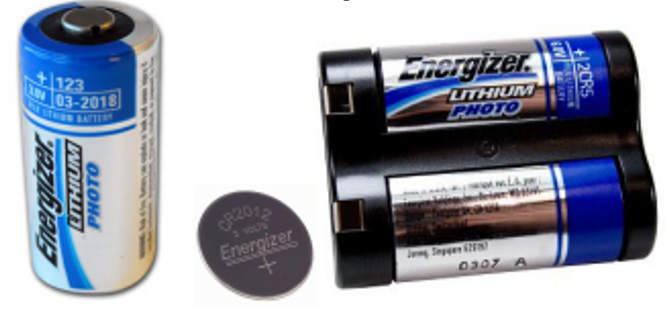There’s much attention on lithium ion batteries these days. They power smart phones, tablets, and the electric vehicles we’ll all be driving someday. They are also considered dangerous goods (DG) from a shipping perspective and, therefore, require specialized packaging, labeling and storage – along with adherence to a long list of government regulations and carrier requirements.
Not all 3PLs and freight forwarders have the experience required to ship lithium batteries safely and in full compliance. But just about all say they do, and that can expose you to a ton of risk – from supply chain delays to government fines to high-liability accidents.
Here’s a primer, in Question and Answer format, to get you up to speed on shipping lithium ion batteries internationally.
How fast is the lithium ion battery market growing and what markets are growing the fastest?
The Li-Ion battery market will grow from $44.5 billion USD in 2022 to $135 billion USD globally by 2031. Much of that growth will be fueled (check that, powered) by demand for EV batteries. Most of the growth in electric vehicle production and consumption will be in Southeast Asia and India. OEMs and suppliers will need the right shipping partners to support these new shipping lanes. Read Dimerco’s latest ebook on the EV Supply Chain Challenge.
What’s the difference between lithium metal and lithium ion batteries?
Lithium metal batteries contain metallic lithium and are primarily non-rechargeable. They power our wristwatches, smoke detectors and key fobs.

Lithium ion batteries are rechargeable and power phones, laptops, portable power tools, as well as EVs.

Both types of lithium batteries are considered dangerous goods and are subject to roughly the same regulatory requirements.
Why is shipping lithium ion batteries problematic?
Unlike standard alkaline batteries used widely around your house, most lithium batteries contain a flammable electrolyte and have incredibly high energy density. They can overheat and ignite under certain conditions like a short circuit, contact with water, or physical damage that might occur during a long shipping voyage.
That’s why regulations and carrier restrictions are so stringent. And these requirements apply door to door. That means first- and last-mile truckers, warehousing storage companies and container freight stations – in addition to air and ocean carriers – must have the proper experience and certifications to handle dangerous goods.
Can you ship Li-Ion batteries via both ocean and air?
 Yes. But because of the type and weight of the batteries and the significant restrictions shipping by air, ocean freight is the dominant mode for shipping lithium-ion batteries internationally, including EV batteries.
Yes. But because of the type and weight of the batteries and the significant restrictions shipping by air, ocean freight is the dominant mode for shipping lithium-ion batteries internationally, including EV batteries.
Standalone lithium batteries are prohibited to transport as cargo on passenger flights. Lithium batteries that are attached with the equipment can be shipped by air, but there are restrictions on the quantity of batteries and the type of equipment. Standalone lithium batteries can ship in bulk via cargo aircraft but they must be packed in an approved way to prevent short circuits. That includes individually packaging batteries and placing the batteries in a secondary outer packaging, which is also designed to prevent short circuits.
Is it difficult to book shipments of lithium ion batteries?
It can be since carriers will have different restrictions. In fact, these differences extend to the type of aircraft and steamship vessel.
Knowledgeable forwarders understand the need to take a carrier-specific approach. It helps to work with a freight forwarder that has strong relationships with carriers and a good understanding of their operating guidelines.
Because of all the special requirements of DG shipping, large-volume shipments can pose problems. Let’s say you have a special project that involves 50 ocean containers of Li-Ion batteries. That means you’ll need 50 full trailers with chassis and DG-certified drivers for pickup and delivery from the port. Not an easy task.
Are there added documentation requirements for shipping lithium ion batteries internationally?
For sure. Although not always required, one of the most important forms would be the Dangerous Goods Declaration, which documents the type of cargo and the associated hazards. The exact UN Code must be identified since this would determine applicable regulations. You’ll also need to provide the material safety data sheet (MSDS) of the product.
Additionally, lithium batteries must go through a series of tests at the factory to check their ability to withstand heat, vibration and more. The US Department of Transportation (DOT) now requires manufacturers and distributors to provide “test summaries” to carriers. This requirement applies globally and is now mandated by the International Maritime Organization (IMO).
What about packaging?
From a shipping perspective, most packaging happens at the factory, with an emphasis on segregating individual batteries to prevent short circuits or physical damage. How lithium batteries are shipped will determine how they need to be packed and labeled. Shippers need to be certified to pack dangerous goods to ensure compliance with all regulations.
- Batteries must be placed in non-metallic inner packaging that completely encloses the cell or battery and separates each from contact with electrically conductive materials (e.g., metal).
- They must be packed to prevent shifting that could cause damage.
- EV batteries contained in vehicles or equipment must be securely fastened in the battery holder.
A large volume of EV battery shipments travel through Asia where monsoon rains can penetrate poorly protected outer packaging and damage the goods. Heavy duty shrink wrap and plastic covering is a wise investment. Dimerco uses such techniques on battery shipments, and to protect high-value semiconductor products. See more detail on these packaging techniques in our ebook: Streamline your Electronics Supply Chain.
How about special marking or labeling?
On the outer packaging, carriers are looking for:
- Identification of cargo type (e.g., lithium ion batteries)
- Class 9 lithium battery label
- UN DG identification number
- Shipper or recipient name and address
Markings such as the one below for lithium batteries must be durably applied or printed, be legible, and be able to withstand the elements.

Are there published guidelines for shipping lithium ion batteries?
Yes. Here are some links to reference documents:
- For air – the IATA Lithium Battery Shipping Regulations Manual
- For ocean – the International Maritime Dangerous Goods code can be accessed via the IMO website
- For US DOT – the Lithium Battery Guide for Shippers
- In addition, check out the Guidelines for Safe Transport of Lithium Ion Batteries in Containers
Is there a need for more insurance coverage for Li-Ion battery cargo?
Yes. Dangerous goods simply carry more risk than general cargo. Also, as fire is one of the potential hazards when shipping lithium ion batteries internationally, there is potential liability for adjacent cargo that is also damaged. Don’t rely on steamship lines or trucking companies to cover your risk.
Choosing the right partner for shipping lithium ion batteries internationally
In this article, we’ve just scratched the surface in terms of the ways shipping lithium ion batteries are different and more complex than general cargo. Choose a 3PL or freight forwarder that has experience shipping batteries or other dangerous goods. The downside risk of an inexperienced provider is just not worth it.
At best, your shipments could be rejected by carriers due to improper documentation or packaging, delaying your supply chain and disappointing customers.
At worst, you could face liability for an in-transit accident.
The good news is that you don’t have to become an expert in lithium battery shipping or EV battery shipping. By partnering with an experienced shipper of batteries and other dangerous goods, like Dimerco Express Group, you can ship efficiently – and in full compliance.
Don’t short circuit your battery supply chain. Contact Dimerco to arrange a discussion.
